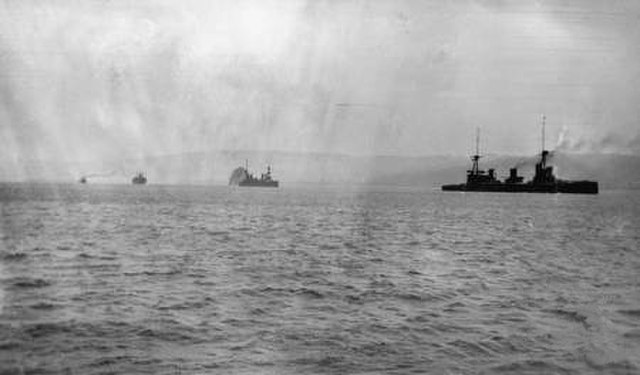Brazilian Expeditionary Force
The Brazilian Expeditionary Force, nicknamed Cobras Fumantes, was a military division of the Brazilian Army and Air Force that fought as part of Allied forces in the Mediterranean Theatre of World War II. It numbered around 25,900 men, including a full infantry division, liaison flight, and fighter squadron.
U.S. President Franklin D. Roosevelt and Brazilian President Getúlio Vargas aboard USS Humboldt, during the Potenji River Conference, with Harry Hopkins, Chairman of the British-American Assignment Board (left), and Jefferson Caffery, U.S. Ambassador to Brazil (right).
General Mascarenhas de Morais (back seat, right), Brazilian army officer and commander of the FEB, with General Dwight D. Eisenhower, commander of the Allied forces in Europe during World War II.
Brazilian soldiers greet Italian civilians in the city of Massarosa, September 1944.
Soldiers of the FEB during the second assault of the Battle of Monte Castello on 29 November 1944.
Expeditionary warfare is a military invasion of a foreign territory, especially away from established bases. Expeditionary forces were in part the antecedent of the modern concept of rapid deployment forces. Traditionally, expeditionary forces were essentially self-sustaining with an organic logistics capability and with a full array of supporting arms.
Alexander the Great fighting in India
Empire of Alexander the Great
"Yermak's conquest of Siberia", a painting by Russian artist Vasily Surikov depicting the Russian conquest of Siberia.
A squadron of the Australian Naval and Military Expeditionary Force off New Britain in September 1914








